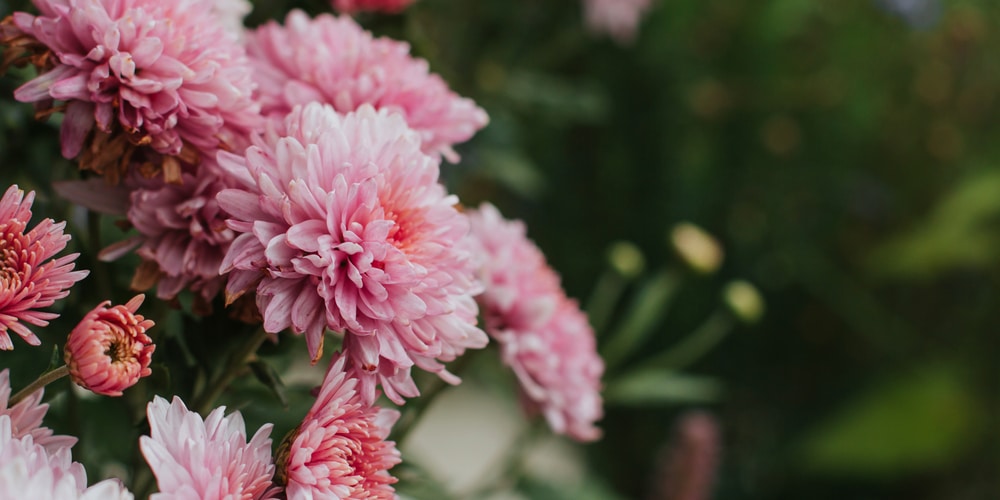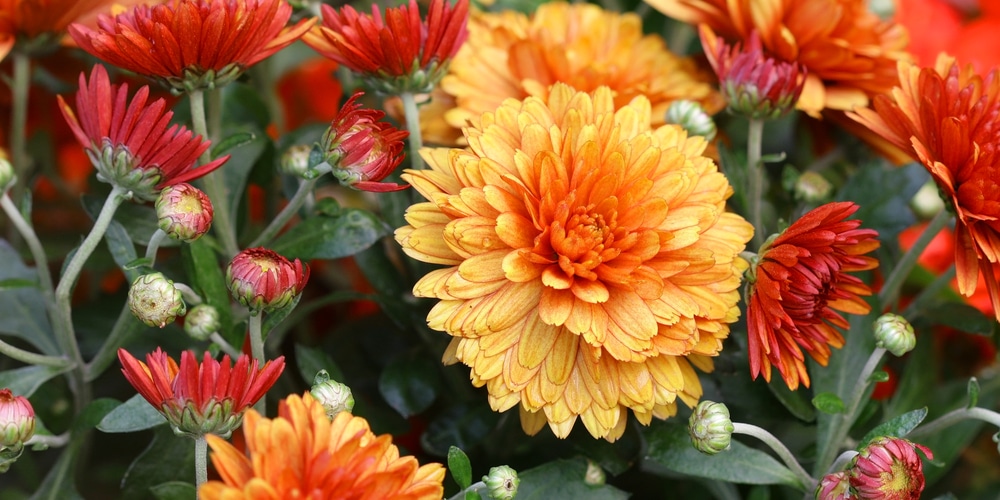Mums are the second most popular plant in the world after roses, and they’re typically easier to care for. But that doesn’t mean they’re immune to problems, and drooping flowers and leaves are among them. So, if you’re asking yourself, “Why are my mums drooping?” we’ll share the most common reasons and solutions for reviving them.
Why Are My Mums Drooping?

Here are some of the reasons your plant may have become droopy and what to do to revive them:
Not Enough Water
Drooping is a classic sign of a lack of water in mums. Mums require frequent watering, a total of one inch of water every week. But you should distribute this water over three or four days, aiming to water them every other day.
Be sure to water your mums around the base of the soil. Some well-meaning gardeners pour water on top of their plants. Unfortunately, this can result in much of the water running off the sides of the plant. That means that the water is missing most of its roots.
You always want a mum’s soil to feel moist, with your finger easily moving through it. But be sure to plant it in a pot or part of your yard with good drainage to prevent standing water from creating root rot.
Bacterial Blight
Bacterial Blight comes from Erwinia chrysanthemi and creates a strange behavior in mums. Moms with bacterial blight appear droopy and wilted during the day. But at night, they pop back to life.
Over time, though, bacterial blight will destroy your mum plants. The later stages of this infection include the plant turning dark brown and collapsing.
Bacterial blight is highly contagious, so you should quarantine it and use a copper or mancozeb-based spray to treat your plant. That said, many people choose to throw away mums with bacterial blight and start fresh with new plants.
Insect Infestation
Pests can cause mums to droop and display several other troubling symptoms. Two of the many insects that feast on and damage mums include:
- Two-spotted spider mites
- Chrysanthemum aphids
Two-spotted spider mites are a more common problem during hot, dry periods. These insects eat mums working their way from the bottom to the top. They cause the blooms to droop and fall off early.
In contrast, aphids eat the sap from a mom’s stems, leaves, and buds. As a result, the plant can become droopy, and its buds often drop before forming flowers.
Soft Rot
Soft rot is another bacteria that cause mums to droop. Erwinia carotovora is to blame, and it’s painstakingly persistent; this bacteria can survive in the air, on non-host plants, and in water.
Even worse, soft rot spreads when gardeners try pruning their plants’ drooping flowers and stems. Overwatering and too much humidity are also common causes of soft rot.
As with bacterial blight, disposing of your infected mums is the easiest and safest method to prevent it from spreading to your other plants. But if it pains you to do so, you can try using copper-based sprays.
Poor Growing Conditions
You already know that a lack of water can cause mums to droop. But other poor growing conditions can also be the culprit of chronic dropping.
You should ensure that your mums have access to the following environment to prevent them from drooping:
- 6+ hours of sun per day
- Well-draining soil
- Moderate amounts of compost
We also recommend pinching your mum’s stems early in the season to encourage its stems to branch instead of growing excessively tall.
Get Your Mums Healthy
Mums are often long-awaited flowering plants for people who love the fall. They are also beneficial as they attract pollinators including bees to your yard. So, while drooping mums are disappointing, it’s often possible to remedy the situation.
The most crucial part of your mum’s return to a healthy state is that you act fast to identify and treat the issue.
